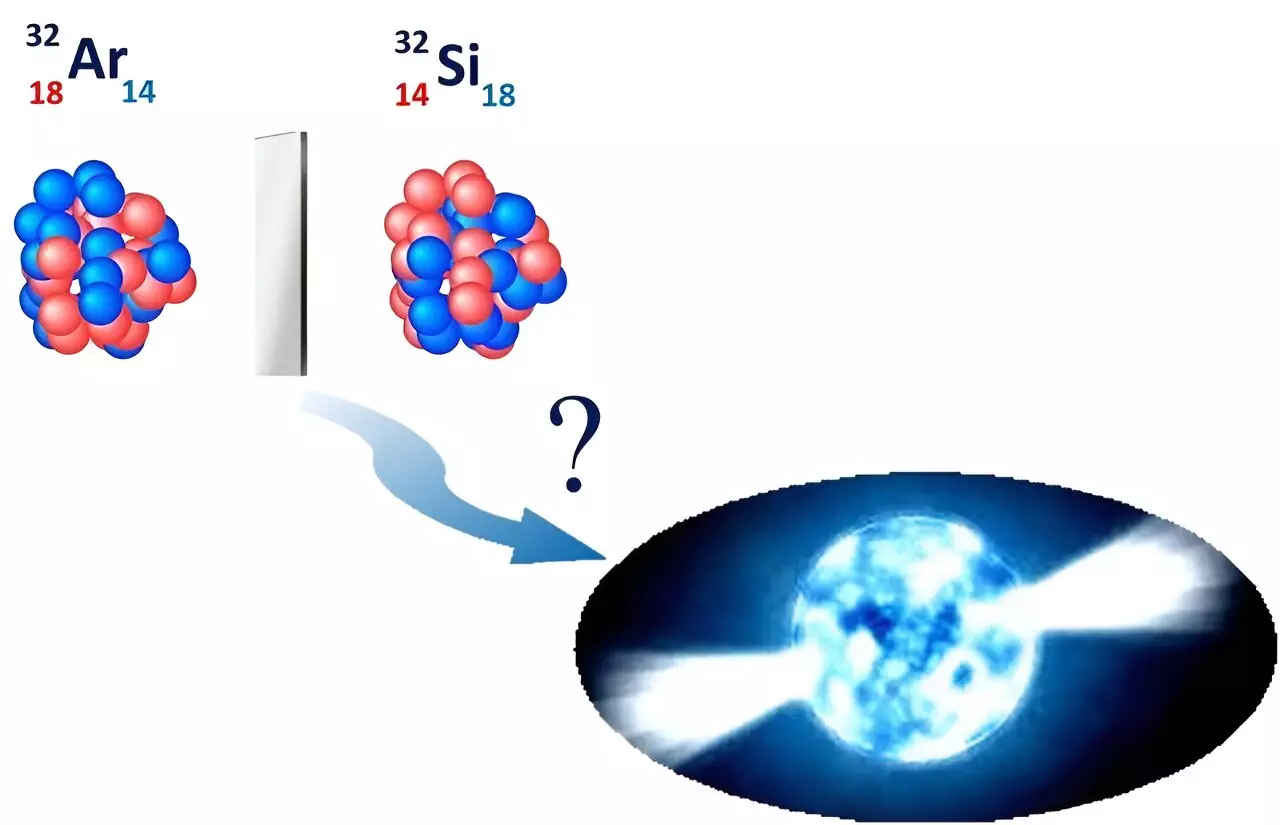When adding or removing neutrons from an atomic nucleus, it initiates changes in the size of the nucleus. This, in turn, leads to minute alterations in the energy levels of the atom’s electrons, which are known as isotope shifts. Through precise measurements of these energy shifts, scientists can determine the radius of the nucleus of a specific isotope.
In a recent study, researchers focused on stable silicon isotopes such as silicon-28, silicon-29, and silicon-30, as well as the unstable silicon-32 isotope. By conducting laser-assisted measurements of the nuclear radii of these isotopes, they were able to gain valuable insights into nuclear physics. The comparison between the silicon-32 nucleus and its mirror nucleus, argon-32, allowed the researchers to establish limits on certain variables crucial for understanding astrophysical objects like neutron stars.
While advancements have been made in nuclear theory, there are still significant challenges that scientists face when it comes to understanding nuclei. One major obstacle is the lack of a clear connection between the description of nuclear size and the fundamental theory of the strong nuclear force. Additionally, the reliability of nuclear theories in describing nuclear matter, which consists of interacting protons and neutrons, remains uncertain. Nuclear matter is prevalent in extreme conditions like neutron stars, making it crucial for researchers to enhance their understanding of it.
Precision Measurements and Nuclear Theory
To address these challenges, precision measurements of charge radii, which refer to the radius of atomic nuclei, play a crucial role. By utilizing laser spectroscopy measurements at facilities like the BEam COoler and LAser spectroscopy facility (BECOLA) at the Facility for Rare Isotope Beams (FRIB) at Michigan State University, researchers can obtain vital data for the development of nuclear theory. The nuclear radius differences observed between different isotopes provide essential benchmarks for refining these theoretical models.
Implications for Astrophysical Objects
The findings from the study on silicon isotopes not only contribute to our understanding of nuclear physics but also have significant implications for astrophysical objects like neutron stars. By constraining parameters necessary for describing dense neutron matter within these celestial bodies, scientists can align their observations with gravitational wave data and other relevant measurements. This integration of experimental results with theoretical frameworks is crucial for advancing our knowledge of nuclear processes in extreme environments.


Leave a Reply